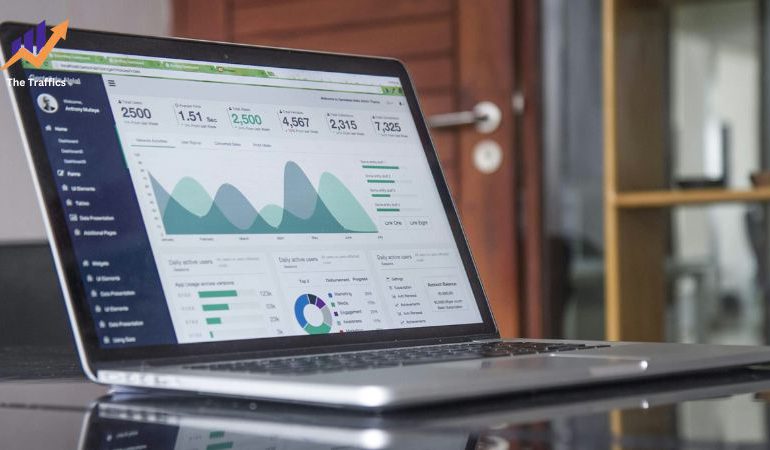7 Essential Metrics to Track When Buying Website Traffic

For online businesses, bringing traffic to your website in the current world of the internet and other technologies is important. One of the easiest ways to achieve these results is to buy website traffic. Paid traffic sources can bring traffic directly to the site and convert it into leads or customers quickly.
But buying website traffic is not the ultimate solution. It is important to monitor and evaluate the performance indicators of the actual traffic buying process to achieve the desired results. Making informed decisions can help you enhance your campaigns and get the highest impact on your monetary investment.
Why Tracking Metrics is Important When Buying Website Traffic
Tracking metrics when buying website traffic is important for several reasons:
- Check performance: Your site traffic campaigns can be checked based on how well they perform. They enable you to know whether your strategies are effective or not and make decisions accordingly.
- Optimize Campaigns: Analyze important metrics to find ways to make your campaign more successful and profitable.
- Allocate Resources Effectively: Track your marketing budget spending using metrics. Determine which channels are giving you the best return on investment.
- Identify Opportunities: Analyzing metrics can help you discover new opportunities. For instance, you can see which traffic sources are most effective, or which audience is most interested in your product or service.
- Demonstrate ROI: It shows the potential of measuring the ROI of buying Website traffic. This helps show the ROI of your marketing strategy and get approval for future marketing budgets.
Metric 1: Conversion Rate
The conversion rate displays the number of individuals visiting the website and performing a particular action. This action can be buying a product or subscribing to a list of newsletters.
Another is it assists you in determining the success of your traffic campaigns. It also helps in monitoring the overall performance of your website or blog. It also helps in knowing the success of your traffic campaigns and the general performance of the website you are using.
Conversion rate can be obtained by dividing the number of actual conversions by the total traffic and multiplying by 100. Next, take the above result and multiply by 100. For instance, if a particular site was visited by 1000 visitors and 50 of them subscribed, then the conversion rate is 5%.
Converting rate tracking is useful because it informs you which sources, pages, or offers your audience finds engaging. This, in turn, helps you make your campaigns more effective and therefore achieve better results.
Metric 2: Bounce Rate
The bounce rate, which is the percentage of visitors who leave your website after clicking on one page only, is the sole benchmark in the web environment. When the bounce rate is high then your site is failing to engage people and is not relevant to the user.
You can interpret the bounce rate by taking the number of single-page sessions and dividing it by the sum of all sessions then multiplying the total by 100. For example, if you had 1,000 sessions and 200 of them were single-page sessions, then your bounce rate would be 20%.
Maintaining an ideal bounce rate on your site is vital for you as it will make you aware of the sections to concentrate on in terms of the richness of your content, the user experience of web design, and the direction of traffic. By handling these problems, you can cut the minimum bounce rate and let visitors move on through the pages of your website.
Metric 3: Average Session Duration
The average session duration is the length of time, on average, a visitor spends at your website during a single visit. This metric can provide insights into the level of engagement and interest your content or offerings are generating.
The average session duration can be computed by totalling all of the sessions’ duration and then dividing that by the count of all sessions. Suppose you had a total of 10,000 seconds for all sessions and there were 500 sessions, in this case, the average session duration would be 20 seconds.
Having a longer average session duration typically means the customers find the website very informative and feel the urge to stay and read it to the end. Monitoring this metric can allow you to discern the top traffic sources, pages, or content that have an effect on your audience and adjust any underperforming parts of your website.
Metric 4: Return on Investment (ROI)
The return on investment (ROI) is the measure of how profitable your website traffic-buying is. It determines the amount of income or worth that your traffic-buying campaigns produce, compared with the cost of those campaigns.
The formula to compute the ROI is:
ROI = (Revenue or Value Generated – Cost of Traffic Buying) / Cost of Traffic Buying x 100
Let’s say you spent $1,000 on traffic-buying campaigns and realized $2,500 in revenue. Here is the computation of ROI:
ROI = ($2,500 – $1,000) / $1,000 x 100 = 150%
Tracking of ROI to your business might enable you to see which are the top sources, campaigns, or strategies and how your investments in them are being returned. This enables you to concentrate only on more profitable parts of your business.
Metric 5: Cost per Acquisition (CPA)
CPA in simple terms is a benchmark of the cost of acquiring a new customer or lead through traffic buying techniques applied on the website. The price of each conversion is given by dividing the total of all the traffic campaigns that you are processing through the number of conversions or acquisitions.
CPA = Total Cost of Traffic Buying / Number of Conversions or Acquisitions Imagine you spent $1,000 on traffic-buying campaigns and earned 50 new customers, so here is how your CPA would be calculated:
CPA = $1,000 / 50 = $20 per acquisition
When you are tracking CPA, you can find out how cost-effective your website traffic purchases are. The best part about this approach is that it allows you to make decisions based on data. With the help of optimizing your CPA, you can save on marketing expenses and increase your overall profits.
Metric 6: Click-Through Rate (CTR)
Click-through rate (CTR) is the proportion of website users who click on a particular link or button on a web page or in your promotional advertising materials. Knowing the usefulness of your ad creatives, landing pages, and targeting strategies is important when buying traffic, as this will help you analyze the value of your creatives, landing pages, and targeting strategies.
CTRs are determined by your amount of hits divided by the impressions (i.e. views) and further multiplied by 100. If, for instance, your ad got 1,000 impressions and 50 of the people clicked on it, your CTR would equal 5%.
CTR = (Number of Clicks / Number of Impressions) x 100
By monitoring the click-through rate (CTR) of your marketing campaigns, you will be able to find out which channels or content options appeal most to your audience. Your ability to reach a good position in search results will depend on your preparation to maximize CTR to increase the quality of your traffic acquisition and thus increase the chances of converting.
Metric 7: Website Traffic Sources
Finding out the origin of visitors to your website is essential when you’re about to buy traffic, as this helps you figure out where your visitors are coming from and which channels are delivering the most valuable traffic.
Here are a few typical sources of traffic that can be monitored:
- Paid search (e.g., Google Ads, Bing Ads)
- Social media platforms (e.g., Facebook, LinkedIn, Twitter)
- Referral sites (e.g., industry blogs, partner websites)
- Direct traffic (e.g., visitors who type your URL directly)
- Email marketing campaigns
By analyzing the data about each traffic source, you can figure out the means of conversion, engagement, or return on investment. With such knowledge gained, you can maximize your traffic buying strategies and, thus, be more accurate in allocating resources.
Conclusion:
Using the right metrics is very important to buy traffic for your website. KPIs will help you to know if the traffic buyout campaign is fully working.
Conversion rate, bounce rate, session duration, profit margin, CPA, CTR, and traffic sources count as KPIs. These are performance indicators that highlight the flaws of the campaign. Monitoring these KPIs results in the development of their findings to give actionable data on the campaign.
Purchasing website traffic in line with business objectives can be achieved through the use and regular review of these metrics. Such good alignment can yield quick and profitable returns on investment. To get the most out of purchased traffic, you need to keep monitoring, analyzing, and refining strategies regularly.






